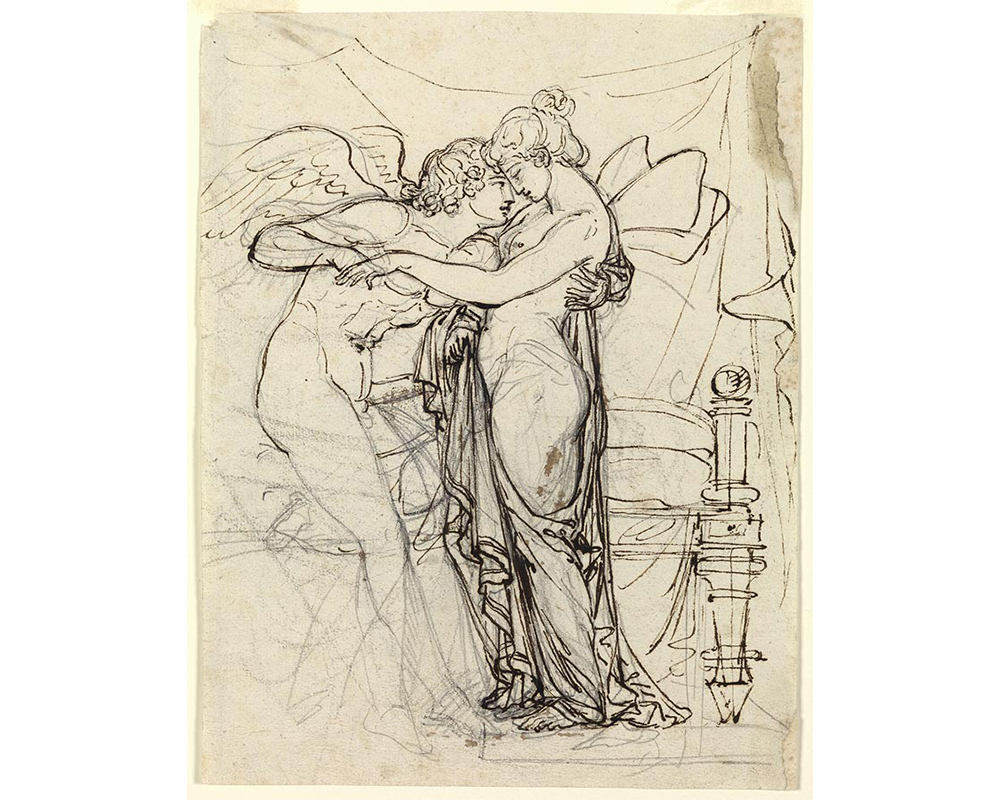
Cupid and Psyche
Maggie Kurkoski is a member of the Smith College class of 2012 and the Brown Post-Baccalaureate Curatorial Fellow in the Cunningham Center.
The most compelling works of art aren’t always the finished masterpieces. Sometimes I find myself drawn to the art that was never meant for display, those sketches and studies created by an artist to practice his craft or to plan for later, more polished projects. One such work recently caught my eye as I was browsing through the Cunningham Center collection: a drawing of Cupid and Psyche by Bartolomeo Pinelli, an early 19th century Italian artist.
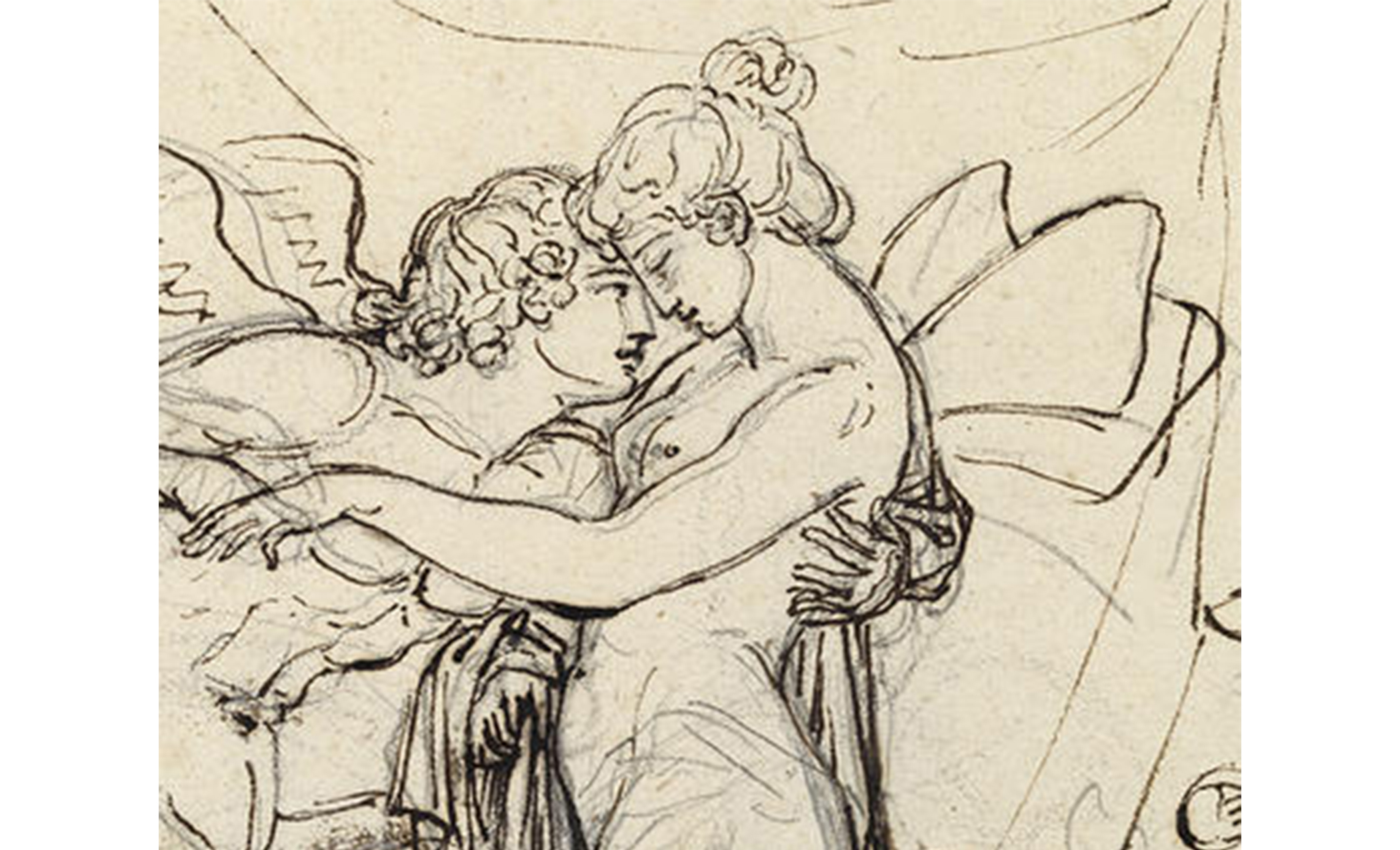
Detail of faces from Cupid and Psyche (recto), n.d.
Even if you didn’t know the title of the piece, there are clues in the image that identify this particularly amorous couple. “Cupid” might bring to mind those fat, winged babies on Valentine’s Day cards, but in Classical Greece he was often depicted as a young man with angelic wings, and the artist chose to draw on that tradition here. His beloved wife was Psyche, often graced with butterfly wings.
What really draws me to this piece isn’t the subject, however, but that it is so clearly not a finalized work. It has a certain liveliness and energy that is difficult to translate into a polished piece. When you look closely, you can see that there are lines of graphite throughout the page, and so it appears that Pinelli spent some time tinkering before he committed to a final design in ink.
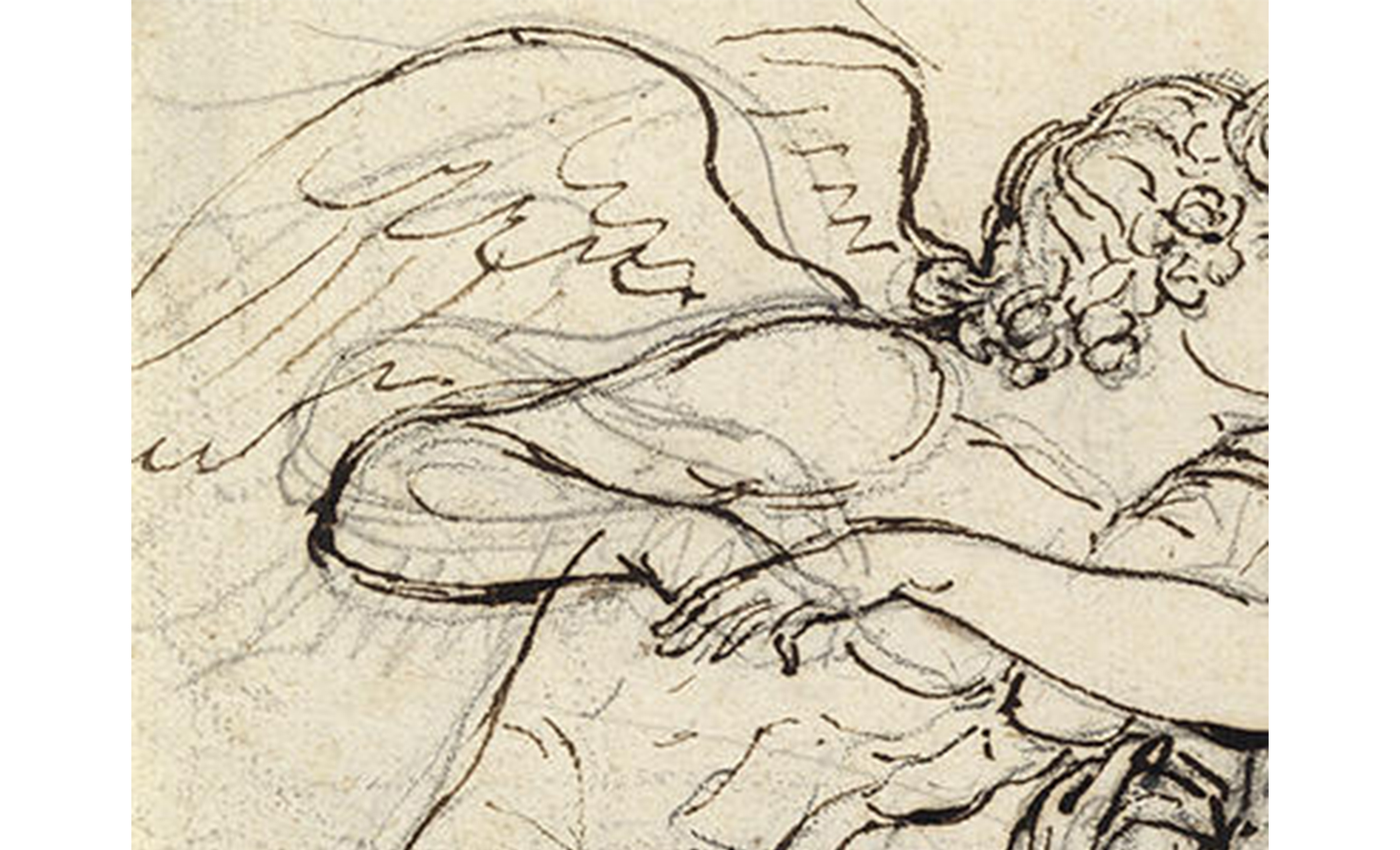
Detail of arm from Cupid and Psyche (recto), n.d.
You can see this experimentation in Cupid’s limbs. Pinelli started with a high right arm, still present in ghostly graphite, before drawing a lower version and executing it in ink. He plays around with different positions for Cupid’s legs, never liking any single one enough to ink it over – he even scribbles over one failed foot!
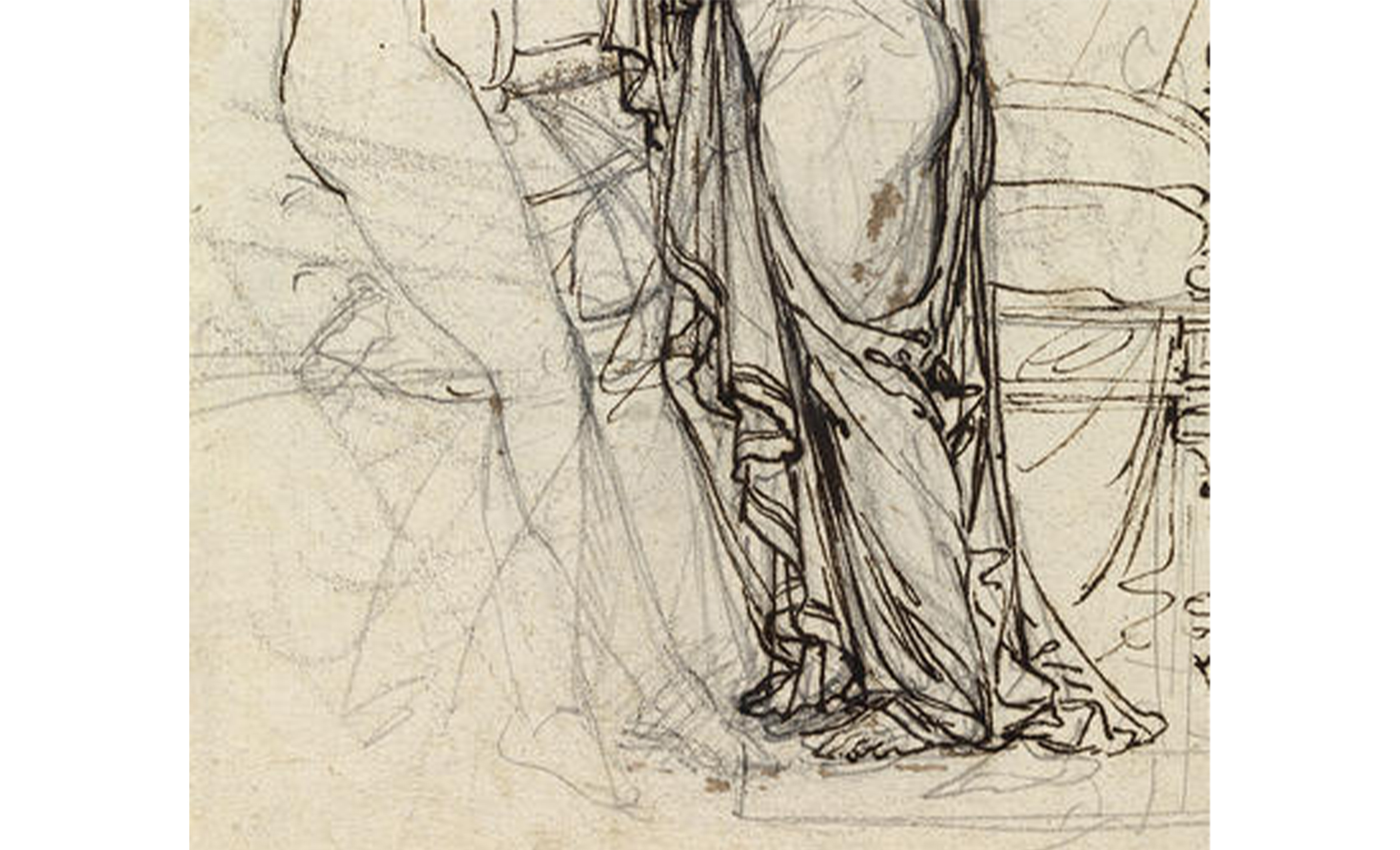
Detail of legs from Cupid and Psyche (recto), n.d.
It’s not until we turn the page over to see the verso (back) side of the drawing that we can see Pinelli’s final vision. The ink from the recto (front) side bled through slightly, and Pinelli has traced over and re-imagined the same couple in lighter, clearer lines.
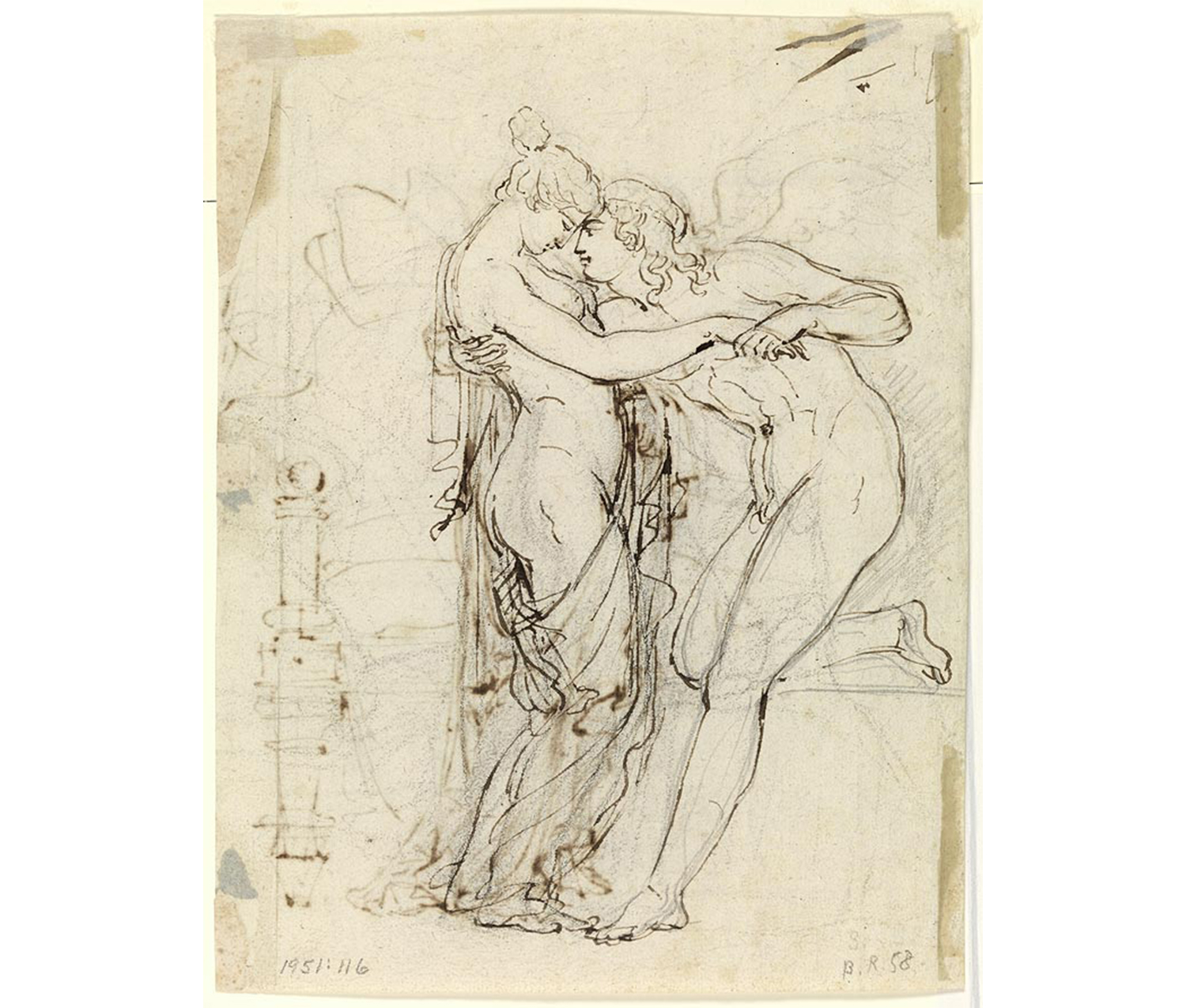
Bartolomeo Pinelli. Italian, 1781–1835. Cupid and Psyche (verso), n.d. Pen and brown ink. Gift of Agnes Mongan, (AM) class of 1929, (LHD) class of 1941. Photography by Petegorsky/Gipe. SC 1951.116.
Both figures have lost their wings, and now the young man possesses two fully realized legs. The emotion is the same, but the artist has resolved many of the compositional problems with which he had struggled in his first draft.
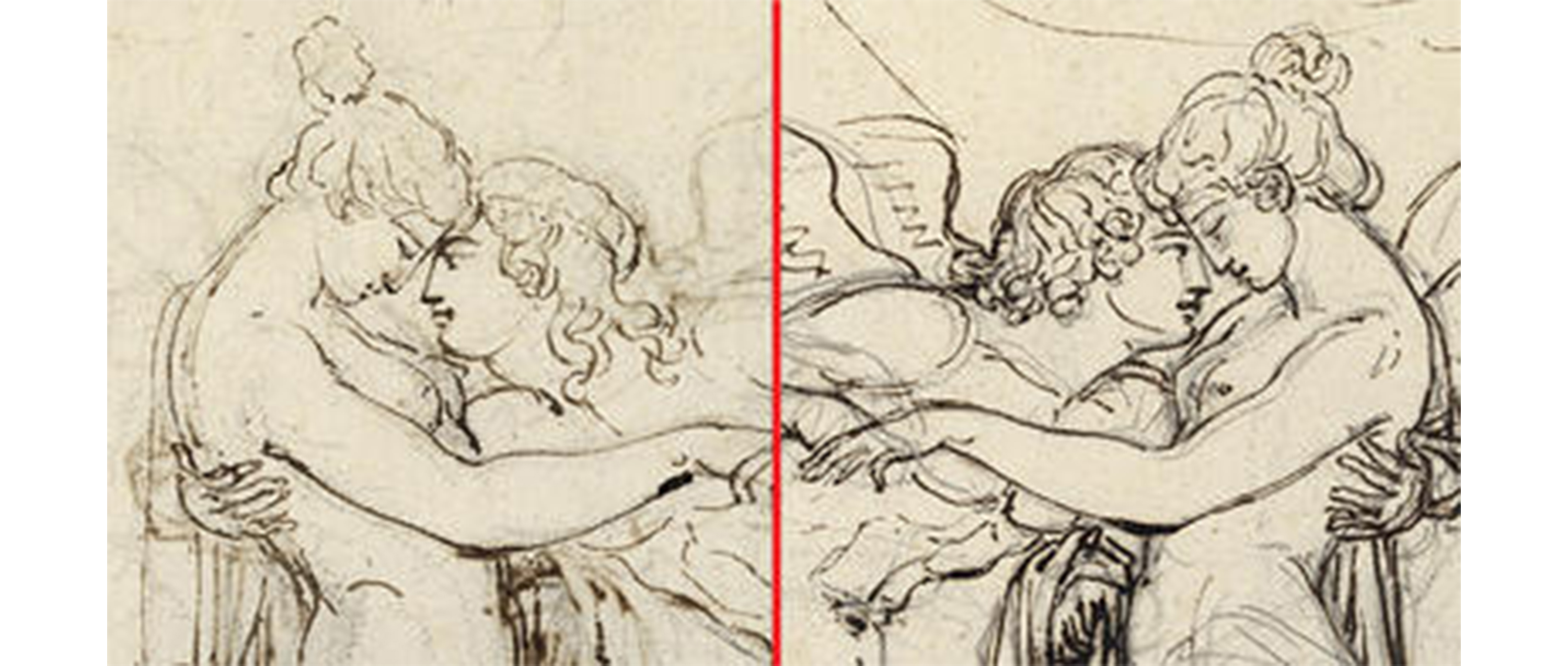
Comparison detail of faces from Cupid and Psyche, verso (left) and recto (right), n.d.
These sketches by early masters can have a powerful effect on how we view art. Sometimes, when we look at a finished portrait or a superb landscape, it seems like the art sprung flawless straight from the pen of the artist, no practice necessary. We forget the hours of experimentation it often takes to perfect composition, line and color, and the many ideas discarded along the way. Drawings such as Cupid and Psyche reveal a moment in this artistic process, frozen on a page for us to see.